

Leader of the Pack: Tom Longboat (72) and Dorando Pietri (19) leaving Windsor Castle
When Olympic marathon races first appeared in the 1896 Athens games, the route was a somewhat arbitrarily chosen 25 miles and, contrary to popular myth, had no authentic origin in Greek history. By the time of the 1908 London Olympiad, the length had been even more whimsically extended to 26 miles, 385 yards – the exact distance between its starting point at Windsor Castle and the course’s terminus at a massive, barely completed stadium in Shepherd’s Bush. Among other things, trainers in those days believed it was bad for their runners to drink water while running and instead kept them supplied with shots of brandy, whisky and – in a pinch – strychnine, which was used as a stimulant.
These are just some of the many revelations to be found in David Davis’ Showdown at Shepherd’s Bush: The 1908 Olympic Marathon and the Three Runners Who Launched a Sporting Craze,
» Read more about: Marathon Men: Class, Race and Races at the 1908 Olympics »


The Fourth of July parade rolled down Main Street in Santa Monica while I sat at the computer writing this. Only half a block away, I could hear the sirens and the bands and the sound trucks. What kept me here instead of there was a desire to reflect, not celebrate. Twice a year – on Martin Luther King’s birthday in January and now – I think about the state of American democracy.
I believe in democracy. I believe that democracy is the best form of government human beings have devised to date because it allows people to actually make changes in the government when they feel it’s required. Monarchies, aristocracies, dictatorships and oligarchies preclude that option. In Western civilization, this country broke the tradition of absolute power to create a republic – although participation was narrow: Voting was limited to male property owners. Over the next 150 years those rights expanded.
» Read more about: A Parade Passed By: Rethinking Our Democracy »
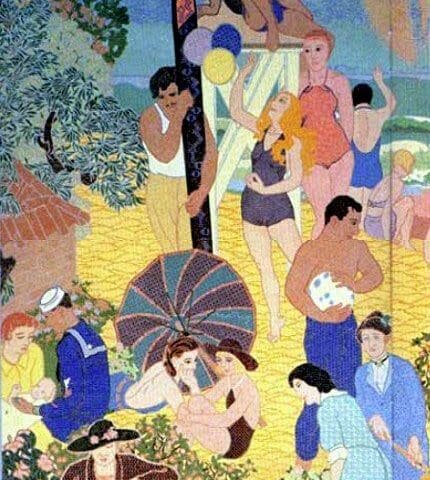
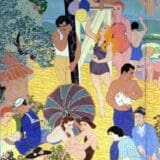
After growing up in L.A., I got used to hearing my hometown disparaged as superficial, anti-intellectual, not a “real” city, celebrity obsessed, etc. etc. It was shocking to me that Los Angeles could be so easily dismissed by people who hadn’t even visited here and seen how great a place it really is. Even deep thinkers from Northern California looked (and still look) down on our town from the ivory towers of San Francisco and Berkeley, as if Southern California doesn’t represent the majority of the people in our state and most of its social and political energy.
And we Angelenos, rather than defend our town, have often accepted the judgment of others – that L.A. isn’t a serious place, doesn’t produce important scholarship, and is well behind the intelligence curve.
Well, if you need a boost to your hometown ego, spend some time at the Hammer Museum’s new show Made in L.A.,

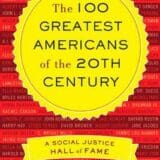
Writer/professor Peter Dreier’s new book is called The 100 Greatest Americans of the 20th Century, a nervy title that dares readers to take a poke at the author’s chin. A corrective to Greatest Generation blather, Dreier’s 100 profiles refract a century of progressive movements through the lives of leaders whose native radicalism helped push America toward a more humane vision of society.
Dreier’s inclusions and omissions will thrill some and bewilder others: Roger Baldwin’s here but not James Baldwin; there’s Mother Jones but no LeRoi Jones. Playwright Tony Kushner ends the list on an intellectual note, yet there’s no mention of a Philip Rahv or any Partisan Reviewers, Algonquin Tablemates, Beats or Bohemians.
Of course, provoking debate about who should be included in a “Social Justice Hall of Fame” (the book’s subtitle) is a clever way to stir discussion about history and activism.
» Read more about: Peter Dreier’s A-List of 20th Century Greats »
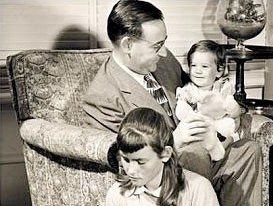
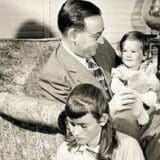
(This post first appeared on California Progress Report.)
The movie California State of Mind: The Legacy of Pat Brown, which has been making the rounds of public TV channels, is a tender blend between a family memoir and a nostalgic look at a more hopeful era in California history. At times it makes you want to weep for what we once had and will probably never have again.
The producers, Hilary Armstrong and Sascha Rice, granddaughters of the man who was governor from 1958 to 1966, weren’t troubled by the mix of the personal and the political, much of it in the form of old film clips. And in some ways the past forty years have been a sort of family history: two governors Brown, a treasurer Brown who also ran for governor, plus the half dozen lesser public offices those Browns held.
» Read more about: Pat Brown Documentary: Remembrance of California Past »
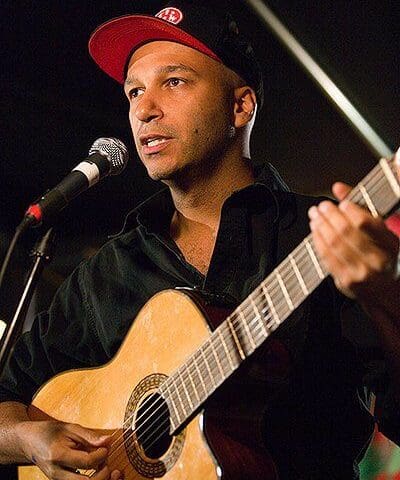

As thousands prepare to hit the streets of L.A.’s historic Chinatown on Saturday, June 30, for the largest protest against Walmart ever held in the U.S., several acclaimed musicians, including three Grammy winners, are joining the growing effort to stop the world’s largest retailer from opening in Chinatown and expanding across Los Angeles with poverty-level jobs and practices that hurt local businesses and communities. Musicians are also backing hundreds of Walmart workers who will march on June 30 to demand Walmart treat them with respect and provide wages that can support families.
Grammy Award-winning singer-songwriter, actor and author Steve Earle made a video from a recording studio in Nashville to support the march against Walmart in Los Angeles on June 30. After singing a few lines from his new song, Earle says, “If I wasn’t [in Nashville making a record] I would love to be in Chinatown,
» Read more about: Musicians Stand Up to Walmart in Los Angeles »
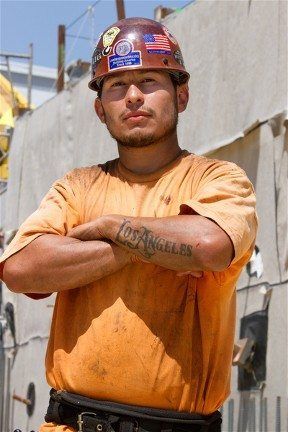

Art allows us to peer into the lives of people we may ordinarily not cross paths with and see the world through their eyes. LAANE’s Construction Careers project did exactly that last night at its photography exhibit and mixer at the Solidarity Ink gallery space in Lincoln Heights. Sixty InterAct members and community leaders mingled with construction workers in a melting pot of wine, cheese and art-gazing.
The goal: to holistically present the lives of ordinary people in the hard-construction industry. We wanted to paint a broad picture of workers from diverse backgrounds, showing them in their homes, neighborhoods and worksites. We strove to portray workers with a sense of grace, documenting intimate moments with their families and the pride that they take every day, in the words of several workers, in “building something that will last.”
The multifaceted realities of Tarita, Luis, Stefanie, and Jabari – four workers from different ethnicities,
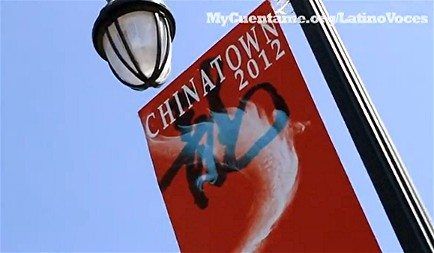

It’s been seven years since documentary film maker Robert Greenwald‘sWalmart, The High Cost of Low Price exposed the corrosive effects the retail giant has had on America’s economy and on its workers.
Now, in advance of the June 30 March Against Walmart, Greenwald’s Brave New Foundation and Cuéntame have released a minute-long short, Stop the Invasion! No Wal-Martization!, in which local business, faith and labor leaders, along with Congresswoman Judy Chu, spell out why Walmart cannot be allowed to move into Chinatown. Take a look!
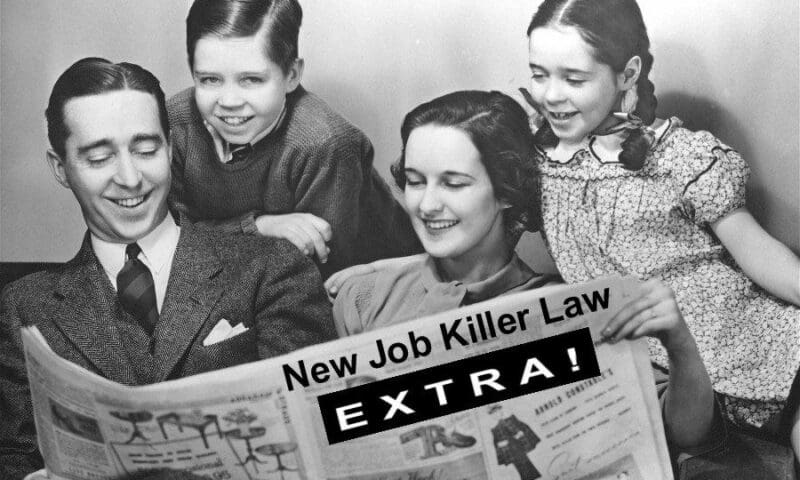
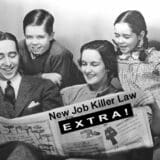
(Editor’s Note: The following executive summary comes from a study partly funded by the Public Welfare Foundation and the Ford Foundation, and is used by permission.)
An independent study released by two prominent scholars found that number of news stories with “job killer” allegations have increased by 1,156 percent between the first three years of the George W. Bush administration and the first three years of the Obama administration.
The study, “Job Killers” in the News: Allegations without Verification, by Professors Peter Dreier of Occidental College and Christopher R. Martin of the University of Northern Iowa, revealed that the “job killer” allegations came most often from Republican and business group sources, and were targeted at policies to safeguard consumers, protect the environment, raise wages, expand health insurance coverage, increase taxes on the wealthy, and make workplaces safer.
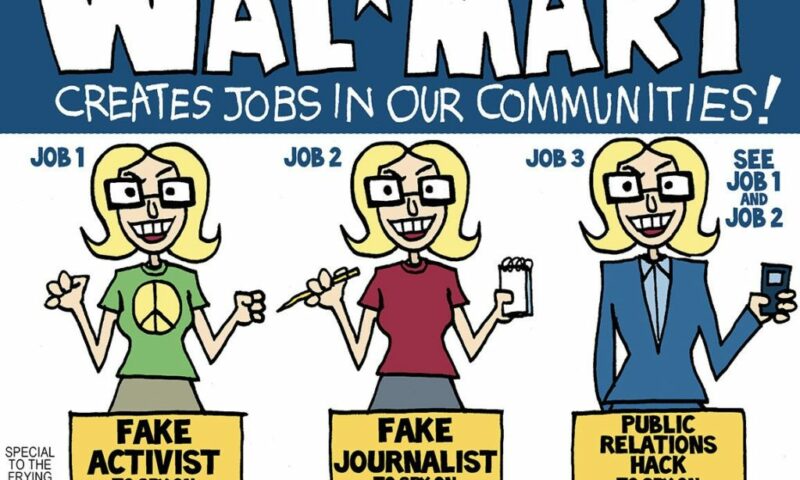

» Read more about: Lalo Alcaraz on Walmart's Fakes and Hacks »


This may be organized labor’s summer of discontent, but don’t tell that to the folks at L.A. Labor 411. The communications group, which for the past five years has supplied Angelenos with directories listing more than 3,000 unionized businesses, goods and services, has been busy compiling socially conscious drinking recipes (mojitos ahoy!), products and venues for those who imbibe. They call one of their standouts the Union Made Long Island Iced Tea – although I’ll bet that Back East it might be known as the Last Exit toBrooklyn. All its ingredients are processed or manufactured by companies where workers enjoy the wage, health-care and vacation benefits of union representation.
Dale DeGroff, the “King of Cocktails” who mixed many a L.I. Iced Tea at New York’s Rainbow Room, places the drink’s birthplace at the Old Beach Inn in Hampton Bays.
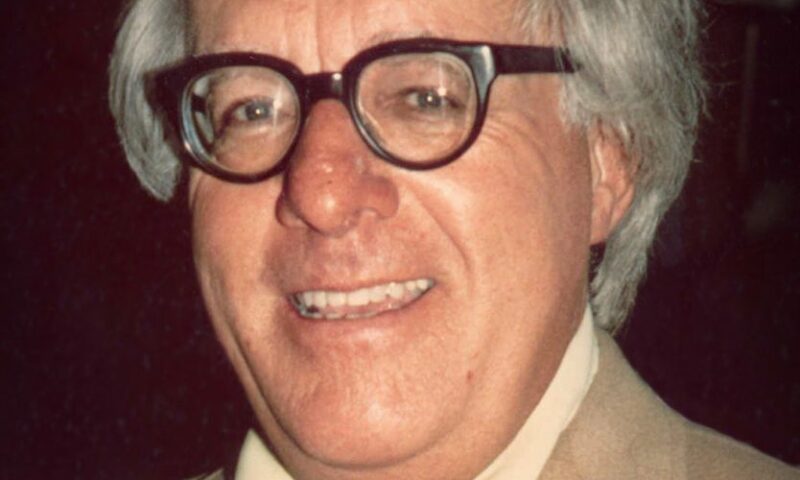
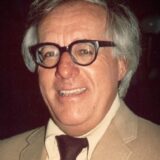
Much was made in Ray Bradbury’s obits last week of his paradoxical nature: He was a science fiction writer who never drove a car or used a computer, a seer who looked to the past to describe the future. All of which was true – Bradbury was one of the few authors who could make a trip to the next century seem like a sentimental journey. The reason is that so much of his Tomorrowland was really mid-20th Century America dressed up in a space suit and relocated to Mars. The Midwestern front porch on a summer evening, lit by fireflies and the murmur of conversation, was as key to Bradbury’s fictional worlds as rocket ships and robots.
In fact, Bradbury is too often typecast as a science fiction writer – after all, he wrote a number of plays for Los Angeles theater, along with the screenplay for John Huston’s film Moby Dick and the narration for King of Kings.
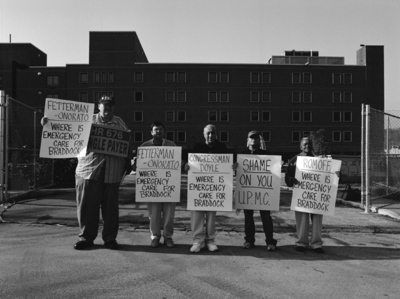
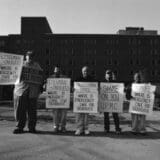
All the bad things you heard about the 2012 Whitney Biennial, which closes June 10, are too true. For some time now the Biennial has been a favorite piñata of conservative critics who’ve bristled at the introduction of Lowbrow art and other populist trends. This 76th biennial, however, annoyed a number of reviewers across the spectrum. Huffed the Village Voice:
Composed of arty ephemera, light musings on decades-old conceptual processes, and bogus curatorial gestures that conflate sculpture with performance and installation with music—the mind boggles at the notion of turning over most of the museum’s fourth floor to genre-mixing “free collage,” i.e., choreographer Sarah Michelson’s noodling at preview time—the 2012 biennial promulgates a dark sensibility as an artistic foil to America’s Tim Tebow culture.
Part of the reason some New Yorkers were riled up was the show’s corporate provenance: It was bankrolled by Sotheby’s and Deutsche Bank,
» Read more about: Closings: The Whitney Biennial's Dark Sparkle »


The 20th anniversary of the Los Angeles riots has triggered a number of fascinating reports examining the underlying causes of the unrest and the changes (in attitudes and actions) that have taken place in the past two decades.
Scholars at the University of Southern California produced a report called L.A. Rising: The 1992 Civil Unrest, the Arc of Social Justice Organizing, and the Lessons for Today’s Movement Building. Their counterparts at L.A.’s Loyola Marymount University, published 20th Anniversary of the Los Angeles Riots Survey. And my colleagues at the Los Angeles Alliance for a New Economy (on whose board I proudly serve) published a series of reflections by L.A. activists called Rage and Reflection: Meditations on LA’s 1992 Civil Unrest and the Ongoing Transformation of a City.
» Read more about: "Riots" or "Rebellion": What We Learned from 1992 »


“More deeply still, nonviolence is a spiritual challenge of epic proportions. It calls upon the soul’s authentic longing for heroism, for risking one’s life for an infinite stake, for self-transcendence in giving oneself to another.” – Walter Wink
After Reinhold Niebuhr succumbed to Cold War fever, there was no longer a major voice in Christian ethics among Protestants. In seminary, I myself had to read Paul Ramsey, who couldn’t get any closer to examining the ethics of war than resuscitating Just War Theory from the late days of the Roman Empire. Most of us who opposed the Vietnam War were stuck with a rationale that this-war-in-particular was unjust and therefore should be stopped. Since no one could articulate a thorough critique from a non-violent perspective, we were flying by the seats of our intellectual pants.
Little did I know that alongside mainstream Christian ethics, hidden somewhere in the obscure hallways of academia,
» Read more about: Remembering Walter Wink: Ethical Thought behind Non-Violence »
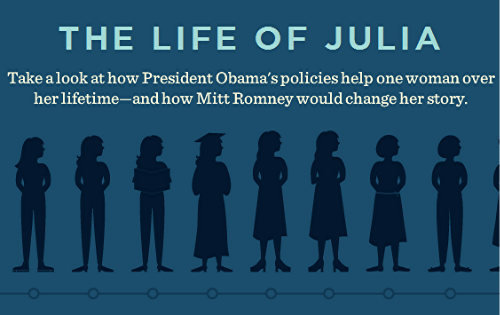
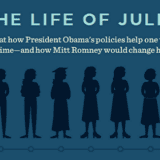
David Brooks, the usually buttoned-down columnist for the New York Times, succumbed recently to a peculiar eruption of Id. Like many of his fellow conservatives, he’s in a snit about The Life of Julia, an Obama campaign slideshow that portrays the title character benefiting from federal programs like Head Start and Social Security. (See my previous article here.) Brooks casts Julia as a “vision of government as national Sugar Daddy, delivering free money and goodies up and down the life cycle.” My attention was riveted by that term, “Sugar Daddy,” which doesn’t just refer, say, to a rich uncle, but to an older man who showers gifts on a young woman, often, by implication, in return for sexual favors. It’s difficult to imagine Brooks taking a detour into so dark a recess of the imagination if it had been The Life of James.
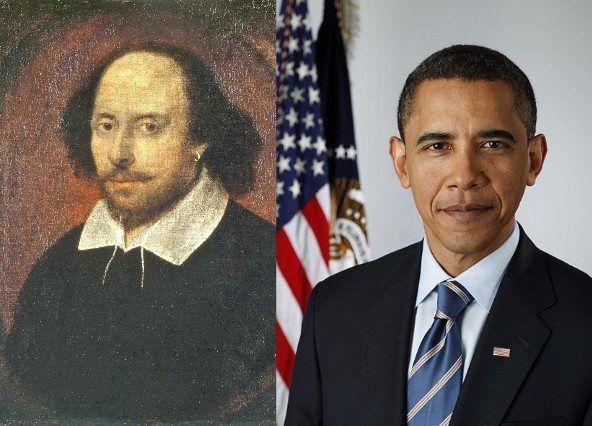

It’s hard to know where to begin. A co-worker walked onto the restaurant floor after her break. She was shaking her head. She’d been on the computer downstairs.
“It’s official,” she said. “Obama was born in Kenya. He wasn’t born in America.”
I took a deep breath. The kind normally reserved for hearing alien abduction stories. The kind of deep breath I have to take before telling my nephews that there is no monster living in their closet. The kind of deep breath I take before watching Fox News.
What I find fascinating, appalling and comical about “Birther” conspiracy theories is that it doesn’t matter how many times Obama himself shows his birth certificate. They all derive from the notion that President Obama is not being honest with us. That he is lying.
A recent post by the right-leaning Breitbart.com might even explain the origin of the Obama birthplace rumors.
» Read more about: Birther Smackdown: Obama and Shakespeare »
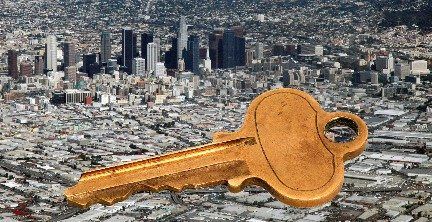

A few weeks back I stood at the corner of 65th and Normandie, in South Los Angeles, remembering what used to be there. An old church, maybe from the 1930s — Spanish Revival with white-washed plaster and enough curved red tile on the roof to make you think it might be real. The congregation members had long since moved away or died, and now the building itself was gone, replaced by sparkling new apartments with units exclusively designed for emancipated youth. Each year in Los Angeles County 1,500 kids get cut loose from the foster-parent system. They are 18 years old with no family, no job, no place to live, no skills and no support to learn any, which is why a majority will end up on the streets or in jail.
And this is why this building, the Epworth Apartments, means so much. Over the years, it could save the lives of scores of young adults.
» Read more about: South LA Story: A Garden and a Place Called Home »


[caption id="attachment_8972" align="aligncenter" width="432"] Cassidy Noblett[/caption]
Cassidy Noblett[/caption]

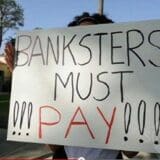
“About 100 Occupy protesters,” reports the Pasadena Star News, “seeking to reverse an eviction gathered Tuesday outside the Pasadena house of a Bank of America executive in the San Rafael neighborhood.” The newspaper said the home belonged to Raul Anaya, a B of A executive. The following LA Progressive post, by Occupy Fights Foreclosures member Cheryl Aichele, was written just prior to the action, which was designed to bring attention to the dire predicament of Dirma Rodriguez and other foreclosed homeowners.
By Cheryl Aichele
On Friday, David Redy — a partner at Redy & Smith— called Dirma Rodriguez, a widowed mother with a severely disabled daughter and four sons, who says she was fraudulently foreclosed upon by Bank of America. Allegedly during the conversation, Redy — who represents the bank— threatened Carlos Marroquin,
» Read more about: Bank of America Foreclosure Backlash in Pasadena »